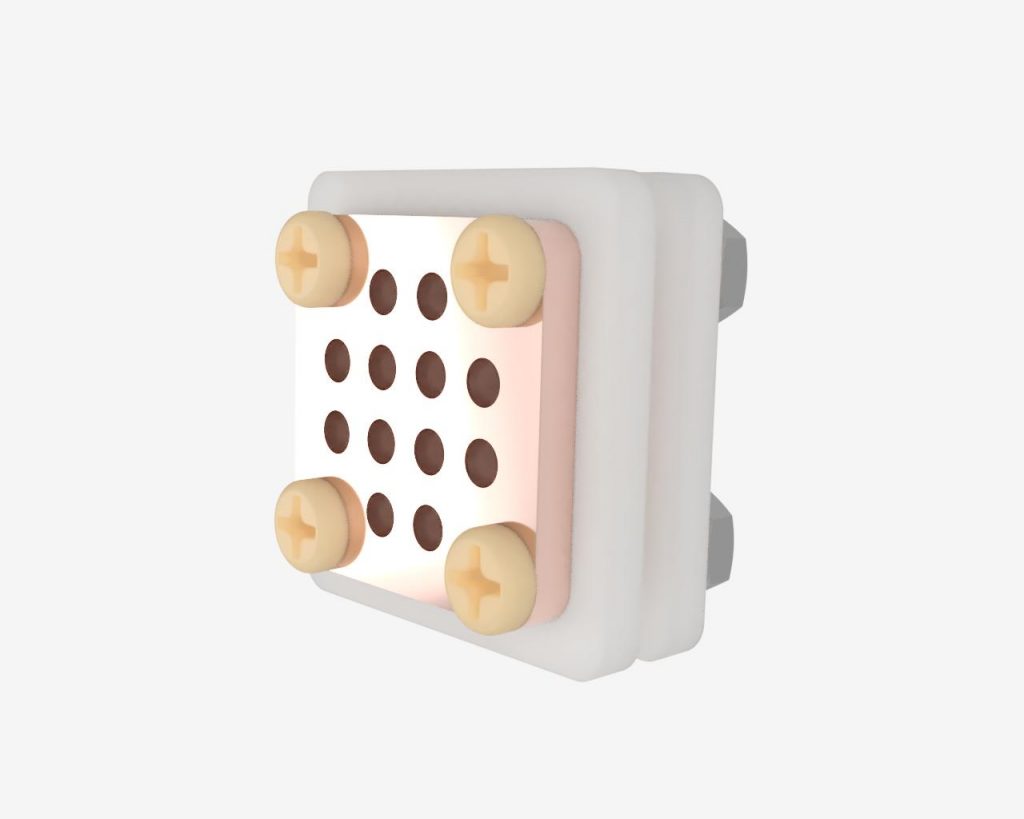If you have been following my recent developments on Twitter, I have recently made another large propulsion system announcement. Last Friday, April 5, 2019, I announced a new conceptual CAD model render of the second pulsed plasma thruster in the works at Applied Ion Systems: the AIS-gPPT1 Gridded Pulsed Plasma Thruster. This new thruster takes a radically different approach towards PPT design, specifically focusing on the miniaturization of PPTs for use with PocketQube-class satellites. The AIS-gPPT1 Gridded Pulsed Plasma Thruster is a unique concept that explores a different way of building miniaturized pulsed plasma thrusters.
Like my first PPT design, the AIS-uPPT1 (which at this point in releasing this post is only about 1 week away from its first high vacuum ignition tests!) looks to not only miniaturize PPT technology, but provide a new approach towards CubeSat propulsion with ultra-low cost, modular, scalable, and minimal-machining based thrusters. The thruster is made up of common materials that can easily be purchased online – oxygen free copper plate, Teflon sheet, 316 stainless steel hardware, and PEEK hardware. The released CAD render of this new thruster design can be seen below:

As opposed to the two dominant styles of PPTs, with either diverging plate electrodes or coaxial electrodes, this thruster utilizes a flat plate stacked assembly with multiple channels and ignition pins. With this topology, the PPT can be built in a very flat, low-profile manner, which would allow for easier integration into the already extremely space-limited chassis of PocketQube satellites. This current prototype is only 1.25″ square, and 0.625″ thick. Two thin Teflon sheets with holes drilled in a matching grid pattern as the electrodes provides both the ignition source plasma as well as main discharge fuel.
While the primary goal of this thruster will be targeting very small satellites like the PocketQube, if proven successful in upcoming tests, the design can very easily be scaled to much larger, standard-class CubeSats. However, the ultimate goal will be to scale this prototype even flatter and smaller, and combined with the overall very low power requirements for capacitor charging for micro pulsed plasma thrusters, may prove to be a powerful breakthrough in micro propulsion for small satellites. In particular, the aimed low cost of the thruster and ease of manufacturing allows this style of thruster to be accessible by any low-funded PocketQube development group or enthusiast.
This first thruster iteration will use the basic topology shown above. Once ignition reliability has been achieved and confirmed, the next step will be the miniaturized high voltage and ignition circuitry, which will be directly integrated with the thruster stack. The complete package should fit within a PocketQube frame, as well as have a thin enough profile that other electronics, boards, and instrumentation can be used on board. One of the major challenge currently with CubeSat propulsion is that the propulsion system itself takes up a significant fraction of space. With an ultra-low profile PPT design, this may be a viable path for low-cost thrusters for these small satellites.
In the coming weeks, I will be adding additional build gallery and engineering specifications pages for the AIS-gPPT1, as well as finally starting some of the first high vacuum tests for actual propulsion testing. Build details will also be released on the Applied Ion Systems Twitter and Instagram pages, so make sure to stay tuned for some exciting developments to come!
